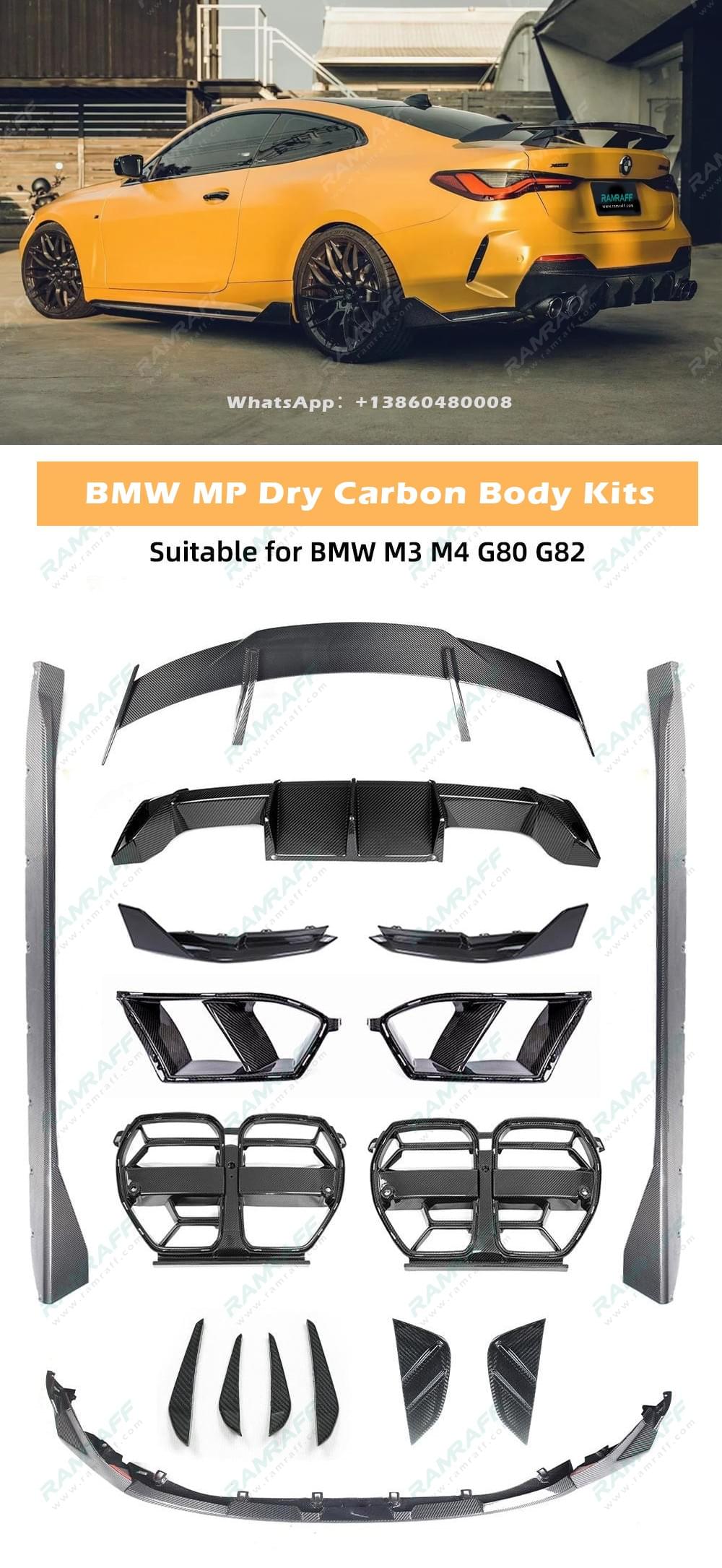BMW M3 (G80) and M4 (G82/G83) Dry Carbon Body Modifications
The BMW M3 (G80)
and BMW M4 (G82 coupe / G83 convertible) are high-performance models from BMW’s M division. In addition to factory aerodynamic options, owners often pursue aftermarket dry carbon fiber body modifications to reduce weight, improve aerodynamic efficiency, and enhance aesthetic appeal. Dry carbon components, manufactured using pre-preg carbon fiber and autoclave curing, are generally lighter and stronger than wet carbon alternatives, making them popular in motorsport-inspired builds.

Common Dry Carbon Modifications
Front Lip
A dry carbon front lip is typically installed to increase front-end downforce and improve stability at higher speeds. Multi-piece designs are often chosen for both aerodynamic function and visual impact.
Rear Diffuser
The rear diffuser in dry carbon helps manage airflow beneath the vehicle, reduces drag, and enhances rear-end stability. Aggressive designs with vertical fins are common in aftermarket applications.
Grille
A dry carbon grille serves primarily as a cosmetic upgrade, giving the front fascia a sportier appearance while providing minor weight reduction. Popular styles include double-slat and honeycomb patterns, often inspired by BMW M Performance designs.
Rear Wing (MP Style)
The MP style dry carbon rear wing is a widely used modification, offering functional aerodynamic downforce while drawing on motorsport aesthetics. Adjustable variants allow tuning for track versus street use.
Side Skirt
Dry carbon side skirts visually lower the vehicle and assist in managing lateral airflow. Designs with rear extensions or “winglets” often complement the diffuser for a cohesive aerodynamic package.
Front Bumper Air Inlets
Dry carbon front bumper air inlets are installed to optimize airflow into the cooling system or brakes. Functional versions may reduce intake temperatures and improve overall cooling efficiency, while non-functional designs primarily serve cosmetic purposes.
Air Knife
Dry carbon air knives, located near the front bumper, direct airflow around the vehicle’s bodywork. These fins contribute to reduced turbulence and improved aerodynamic performance, especially when paired with other body modifications.
Usage
